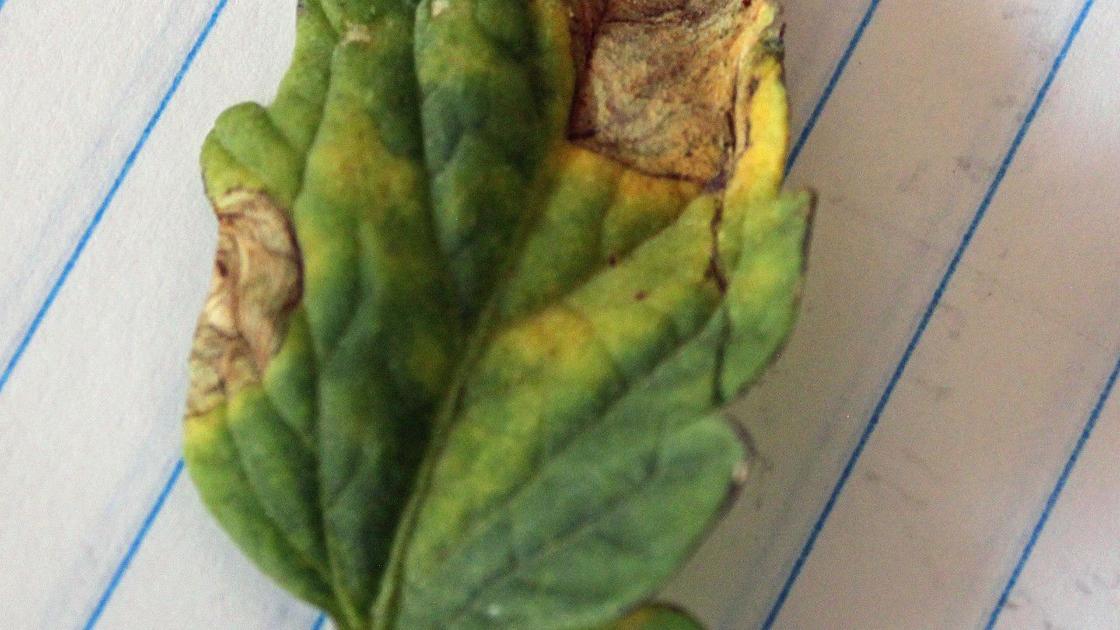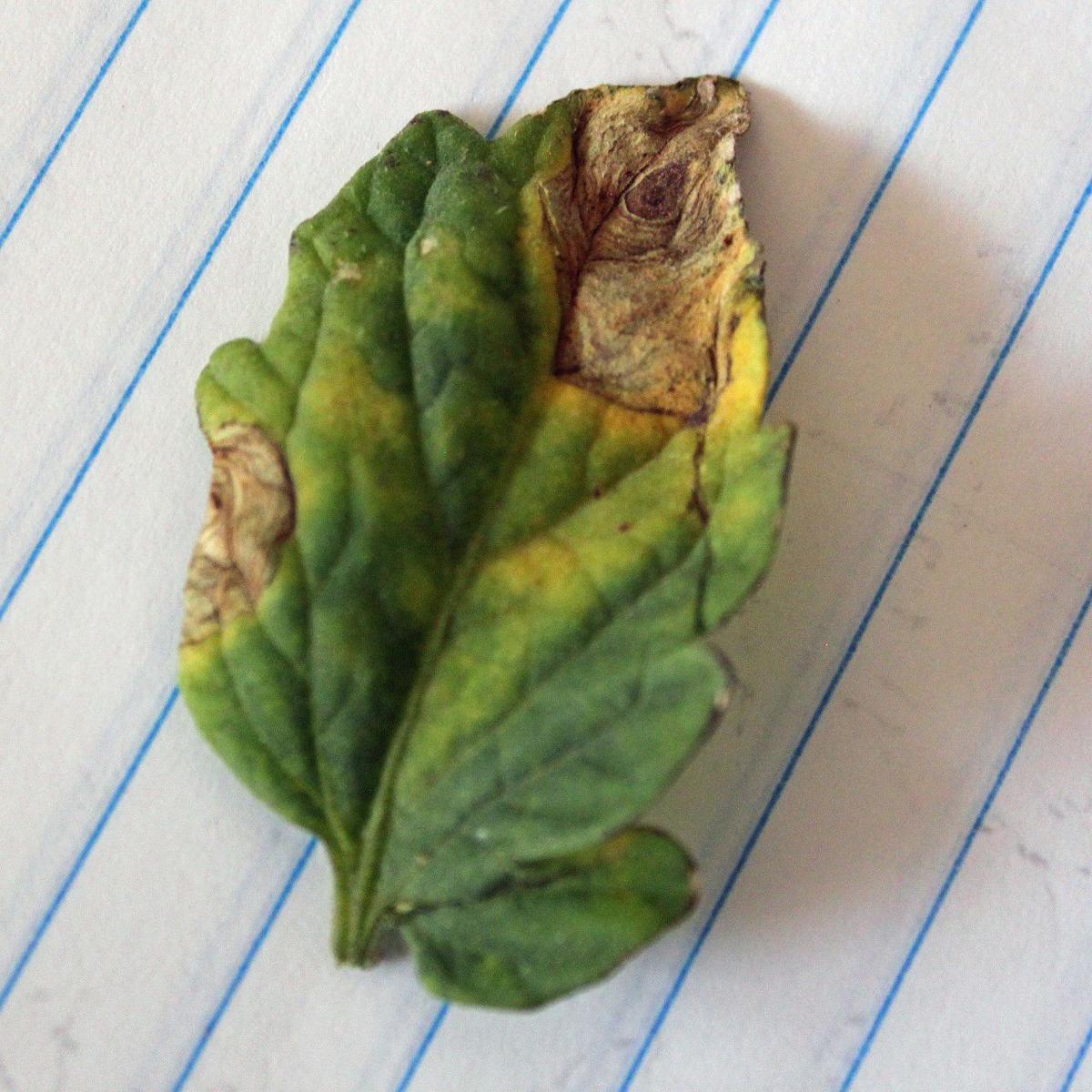

One tell-tale sign of early blight on tomatoes is leaf spots or patches in a concentric-ringed pattern.
Dear Master Gardener,
My tomato plants took quite a beating this year and were barely productive. I think the problem started when a couple of leaves on a lower branch of just one of my tomato plants developed small, irregular, brown patches. The patches got big, leathery, and contained concentric rings. Many of the infected leaves turned yellow and fell off the plant. Not only did this scourge spread all over the plant, but onto my other tomato plants as well. The odd thing is, none of the plants died.
Dear Gardener,
I’m sorry to hear your tomatoes were afflicted with what I believe was early blight, a disease caused by a fungus called Alternaria solani. The tell-tale sign of early blight is that each of its leaf spots grow in a concentric-ringed pattern, giving it a bulls-eye appearance. Alternaria solani spores lie dormant in the soil and on infected plant debris during the winter and are activated in spring or summer when they become wet or are exposed to at least 90% humidity. The soil-borne spores often infect tomato plants when rain or irrigation water hits the ground beneath the plant and splashes onto it. Other methods of transport and contamination include insects, wind, and even human contact.
No doubt, you’re asking yourself how you can possibly get rid of a fungus that’s already in the soil. In the short term, you can’t, but don’t despair; there are a number of measures you may utilize to prevent spores from establishing themselves on your tomato plants.
To begin with, make certain not to introduce any early blight-infected plants into your gardening plots. The first sign of blight may just be a small, sunken spot on a leaf or stem. Don’t purchase these plants.
When choosing a site for your tomato plants, ensure they won’t be placed where other members of its family, Solanaceae, have grown within the last two or three years. These include potatoes, peppers, eggplants, and tomatillos. Likewise, ensure your plot receives adequate air circulation; you may need to strategically place fans in your greenhouse if you’re growing tomatoes there. Also, plan to give generous spacing between each plant.
Once you’ve planted your healthy tomato plants, remove any bottom branches, even those without spots, that may be prone to getting splashed from water on the soil. Putting down straw or wood mulch around the base of each plant may also serve to ward off the introduction of fungal spores.
Never irrigate from above, as this will wet the leaves, providing the ideal environment for fungal germination and development. A drip hose placed at the base of each plant is one of the best ways to water these veggies.
As soon as the tomato plants take off with rapid growth and development, check for spots every few days. Any leaves or branches with spots must be removed, but don’t put them in the compost pile.
Remember, stressed plants are more susceptible to any disease than healthy ones, so keep your tomatoes well-nourished with a fertilizer specially formulated for tomatoes, one not too high in nitrogen. Even a weekly application of fish and seaweed emulsions can do wonders for the plants.
Early blight spreads exceptionally quick, so here’s a good preventative that may well be worth the effort to concoct: Mix into one gallon of water, 3 tbsp. baking soda, 1 Tbsp. vegetable oil, and a few drops of organic dish soap. Spray all over the plants early in the morning. This will change the pH on the surface of the leaf to about 8.0, which is too basic for the fungus to grow. This formula will also help prevent powdery mildew.
While early blight on tomatoes can indeed cause a lot of damage, it’s certainly not a hopeless conundrum. The above pre-emptive and inhibitory measures work quite well, at the very least, to slow the growth of this fungus. In fact, next season, you may find your tomato plants to be entirely free of it.
Cindy Murray is a biologist, University of Arizona Cooperative Extension Coconino Master Gardener, and co-editor of Gardening Etc.
Subscribe to our Daily Headlines newsletter.
September 26, 2020 at 08:00PM
https://ift.tt/3jcN0Vm
Gardening Etcetera: Autopsy results on tomato plants: early blight - Arizona Daily Sun
https://ift.tt/2VAxJ6V
Tomato


No comments:
Post a Comment